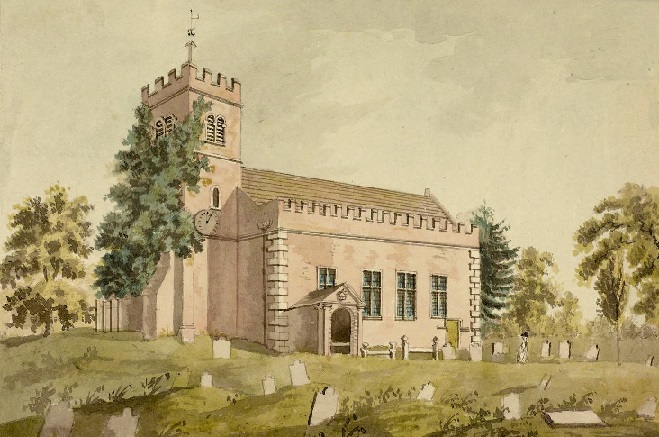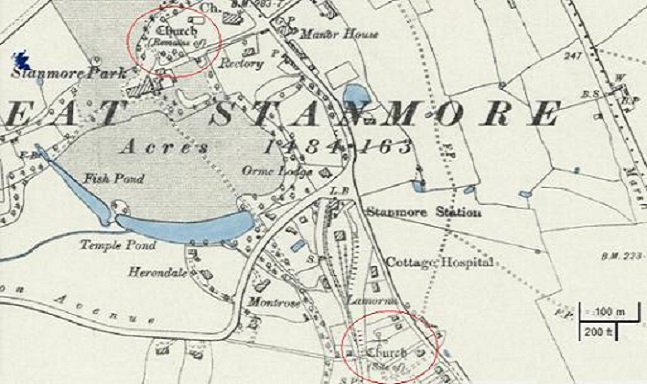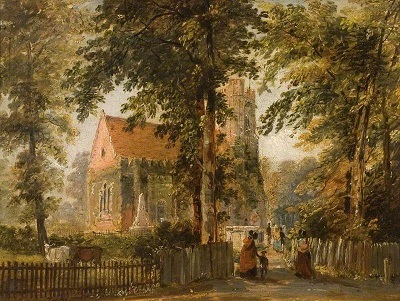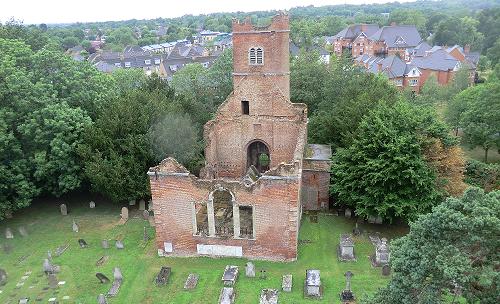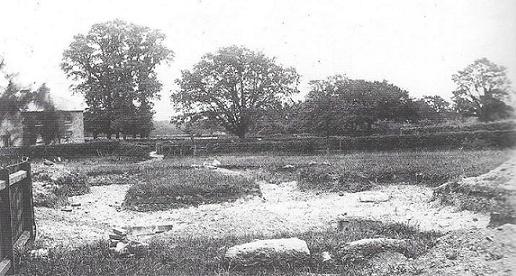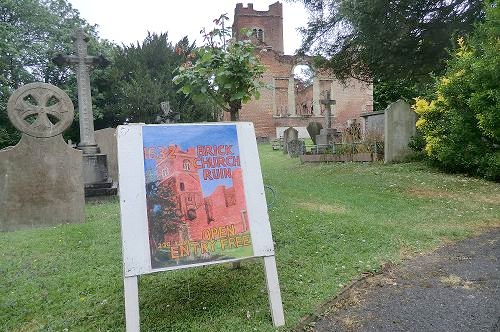The Churches of Stanmore Middlesex
The roots of the Stanmore Churches go back to the time of the Roman Empire. It is thought that a Roman compitum shrine was placed on a crossroad in what is known known as Old Church Lane. It served as a centre of public worship and public meeting place, it would most probably have been adapted to Christian worship sometime after the restoration of religious freedom in 313.
As the Romans left, a small wooden Saxon church was built and consecrated in 1094. This was in turn replaced by a medievel church, the brick church and lastly the present church of St. Johns
The Medieval Church of St. Mary
We could all be forgiven for thinking that 'Old Church Lane' which runs through Great Stanmore is named after the red brick ruined church of St. John which stands adjacent to the end of the lane as it intersects with the Uxbridge Road. In fact the 'Old Church' predates the ruined one by hundreds of years and was built in the 14th century. This medieval Church was built on the site of an old wooden Saxon church.
This Saxon church consecrated in 1094 was in turn built on the site of a Roman compitum shrine. A compitum shrine was a place which served as a centre of public worship and public meeting. It would most probably have been adapted to Christian worship sometime after the restoration of religious fre...
St. John the Evangelist Brick Church Ruin
The Old Brick Church of Great Stanmore, was described in 1951 by Nikolaus Pevsner in his book ‘The Buildings England’ as: one of the finest ruins in the county of Middlesex and if it could talk what a story it could tell. Steeped in nearly 400 years of history, it is the final resting place for one of our former prime ministers, The Earl of Aberdeen, whose many efforts and successes including determining the border between Canada and the U.S.A.
It was paid for by Sir John Wolstenholme, a merchant adventurer who was a founder member of the East India Company. It was decorated by such an august a personage as Nicholas stone, master stone mason to Charles I, and It cost the Archbishop of Canterbury his life, as he was beheaded for treason. These days this Grade II* listed highly picturesque ruin, is of great architectural importance as an example of Caroline classicism, showing the impact of Inigo Jones, one of the greatest English Renaissance architects.
St. John the Evangelist
The foundation stone of St. John the Evangelist was laid in 1849 by Queen Adelaide at her last public appearance. The church, consecrated in 1850, was built on near-by land given by Col. Tovey-Tennent of the Pynnacles, at a cost of 7,855, of which 3,000 was raised by a church-rate and a similar sum given by the earl of Aberdeen and his son, the Hon. Douglas Gordon, who was rector from 1848 until 1857.
Henry Clutton, the architect, used Kentish rag and Bath stone in the Decorated style to build a church comprising a wide chancel with a chapel to the south, nave, north and south aisles, and north-west tower. The organ was later moved to the chapel from near the south door. Vestries on the north side of the chancel were converted into the chapel of St. George by E. B. Glanfield in 1955, and a new vestry was built further north. Alterations to lighten the chancel and emphasize the altar were completed in 1961; they included whitening the walls, removing the brass communion rails and much woodwork, including the choirscreen, and lowering and re-tiling the sanctuary floor. The central light of Thomas Willement's east window, erected in memory of Queen Adelaide, was redesigned in 1950.
Despite such changes there are many fittings, among them a font given by Queen Adelaide and a stained glass window in the south aisle attributable to William Morris & Co.,to recall the wealth of Victorian Stanmore.
St Lawrence, Little Stanmore
The medieval St Lawrence Church was reconstructed by James Brydges, 1st Duke of Chandos in the baroque style. The architect was John James, who also worked on the Duke of Chandos' nearby house called Cannons (which was demolished in 1747). It is possible that James Gibbs oversaw the finishing touches to the church when he replaced John James as the Duke's architect in 1715.
The interior retains early eighteenth-century paintings by artists such as Louis Laguerre and there is an organ played by Handel and restored in the 1990s to its original condition. In the churchyard is a tombstone to William Powell, supposedly "The Harmonious Blacksmith" who inspired one of Handel's keyboard works.
The mystery of the Portland Stone
Limestone from the Isle of Portland in Dorset was quarried by the Romans and was used intermittently through the Middle Ages. It was only in the 17th century that it came to be widely used, after frame saws and water power enabled it to be cut easily and economically. Transport from Portland to London by sea was relatively easy, and Inigo Jones introduced it with the Banqueting Hall of Whitehall Palace in 1619. Work in Portland Stone in London continued at the old St. Paul’s Cathedral, where Inigo Jones designed a new portico for the western front during the 1630s. Portland Stone was widely available in London then, and Nicholas Stone, master mason to King Charles I also made use of it.
St. John’s brick church was built in 1632 but was not completely built of brick – it had a porch at its south door, dressings round the west door, and a font, all designed by Nicholas Stone in Portland Stone. A few years later in 1637 Nicholas Stone also designed a south porch in Portland Stone for St. Mary the Virgin’s Church in Oxford, a church and porch which are still in use.
Sir John Wolstenholme, who financed the church at St. John’s, and Nicholas Stone both had positions of influence under King Charles I – did they liberate stone which was intended for the old St. Paul’s Cathedral for the work at St. John’s, or did St. John’s come by it honestly?
We are left with two mysteries – did St. John’s come by its Portland Stone honestly, and where did it go to?
# visitstanmore
Whether you are visiting on your own as a couple or with the family you will always find plenty to do. Nowadays Stanmore is a place of numerous open spaces and parks. It remains a charming and rural place, with an extremely rich and fascinating history
Show Stanmore some love by supporting small local independent business in the area. Treat yourself to a Sunday morning coffee and pastry, have lunch or picnic with some grub-to-go from a deli or café
But more importantly enjoy yourself and experience Stanmore like never before!
